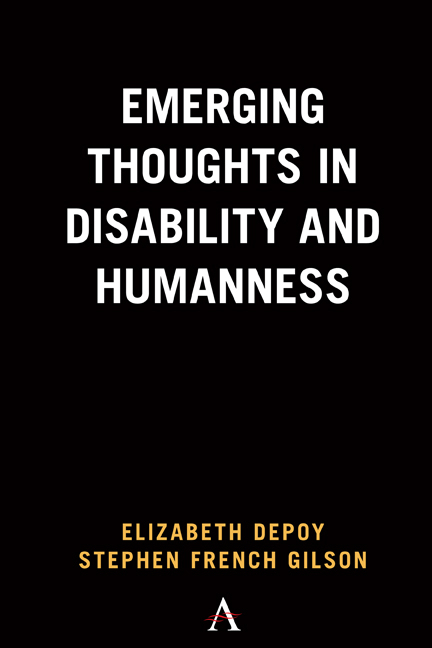Chapter 9 - Revising the Illegitimate
Published online by Cambridge University Press: 13 May 2022
Summary
In this chapter we answer the question of how offending bodies become the object for revision once they are identified and legitimated. Strategies from medicine, psychology, theology, and education are critically engaged.
Revision
Recall the general description of revision in Chapter 1 as the least extreme response offered to bodies who are deemed to require tweaking. We noted that the goals of this response were to identify the something else members, and then to make small changes in person and/or context such that the status quo of humanness as defined by humanism and neo-humanism remains undisturbed. The offender is nudged to the extent possible from the outlier neighborhood into the zone of age-referenced averages. Bodies that typically fall into this container include those who sport mobility, cognitive, sensory, and some psychiatric impairment credentials, which are degenerating as they age. The revision carpenter belt contains many tools, from simple instructions in skills never acquired or lost in action to selective genetic and surgical manipulation of impaired fetuses and bodies. Additions built onto existing structures and spaces are part of this grand schematic to maintain the prototypical universe as is while annexing the squeaky wheels to placate.
Before prospecting into the repository of embodied and environmental revisions, however, we set the foundations in definition and historical precedent. The word revision is defined as an amendment, alteration, or correction (Dictionary.com LLC, 2020). Its very synonyms reveal its strengths and its limitations. Certainly, revision is designed to foster improvement, as in the revision of a book. Of importance to this analysis is understanding revision as the overhaul of something that already exists. Subsumed in this approach are two opposites; inherent value in what already is, or an entity that is not worth more extreme effort. To us, revision makes ultimate sense when the something to be revised is vital and in need of only small repairs. More profound and enduring change does not lend itself to this subspecies of alteration.
Summoning its history, revision is a theoretical term that has often been perceived as pejorative. Revisionism as a movement and theoretical fashion gained its fame as far back as Marx when scholars such as Bernstein introduced pacifism and coexistence of disparate classes into Marxism by excising revolution as the agent of change (Valencia-García, 2020).
- Type
- Chapter
- Information
- Emerging Thoughts in Disability and Humanness , pp. 131 - 146Publisher: Anthem PressPrint publication year: 2022

